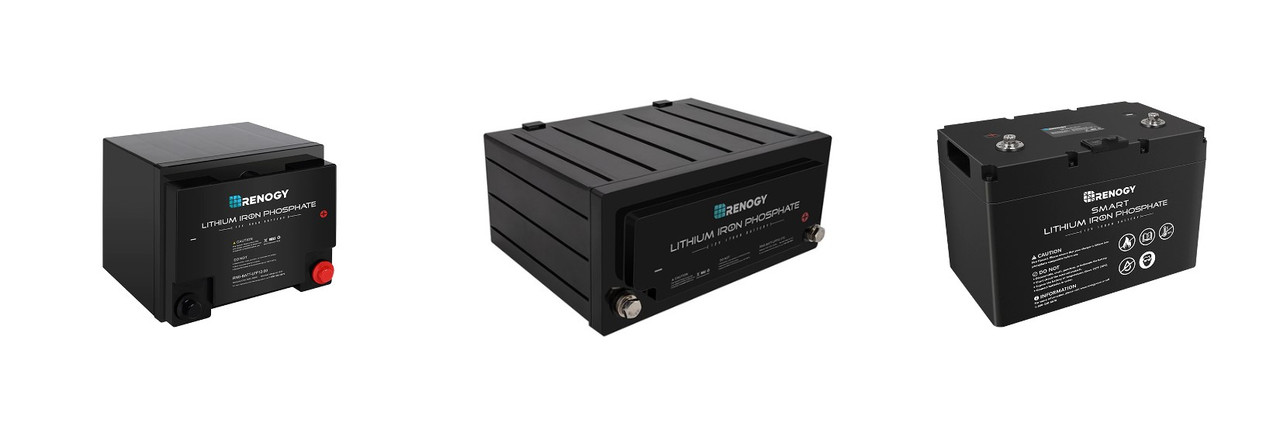Are Lithium Batteries Worth the Investment
Are Lithium Batteries Worth the Investment? A Cost-Benefit Analysis of 4 Deep Cycle Battery Types
This comment, posted in a review of the Renogy 100AH Smart Lithium Iron Phosphate battery, says so much about why people tend to skimp on this essential component of their solar power system. Let’s face it, batteries simply aren’t sexy. They get installed, hidden away in a compartment, and only get attention when there’s a problem. I used to think about batteries like I think about airline travel; some people go first class, but the rest of us go coach. I mean, we all get to the same destination at roughly the same time…right? Is it really worth paying 4 times the price just to cross the continent with more leg room and complimentary drinks? Ok, there was one awesome day when we got bumped into first class on an international flight from Barcelona to Atlanta which completely blew our minds, but we still wouldn’t have purchased that ticket outright. So, aren’t all batteries more or less the same?
Thinking about batteries as if there is some kind of luxury factor, some prestige to the more expensive types of solar energy storage, is simply misplaced. Investing in a battery bank that will last 10 years or more of regular use, when compared to a far less expensive option that you’ll need to replace every few years, is a big decision. If you are going to purchase solar panels that you expect to last 25 years, why go with a battery that will only last 3 to 5? Having lived on solar power for over 8 years, we have experienced both ends of the spectrum in battery technology, and firmly believe in making an upfront investment that will serve you well now AND last into the next decade. Convincing others is a little bit more complicated.
We’ve been searching for a direct side-by-side comparison of capacity, performance, lifespan, specifications, and cost breakdown of the 4 main types of deep cycle batteries for off-grid applications; but instead, we’ve only found mountains of data, product manuals, graphs, and articles comparing 2 types. So, we decided to create our own resource that will make sense of the pros and cons of each battery and the long-term operating cost. In addition, we include a discussion of each category to explain how we reached a calculation or the more subtle points not immediately expressed by the chart. We hope this helps you make a decision about the right type of deep cycle battery for your installation!
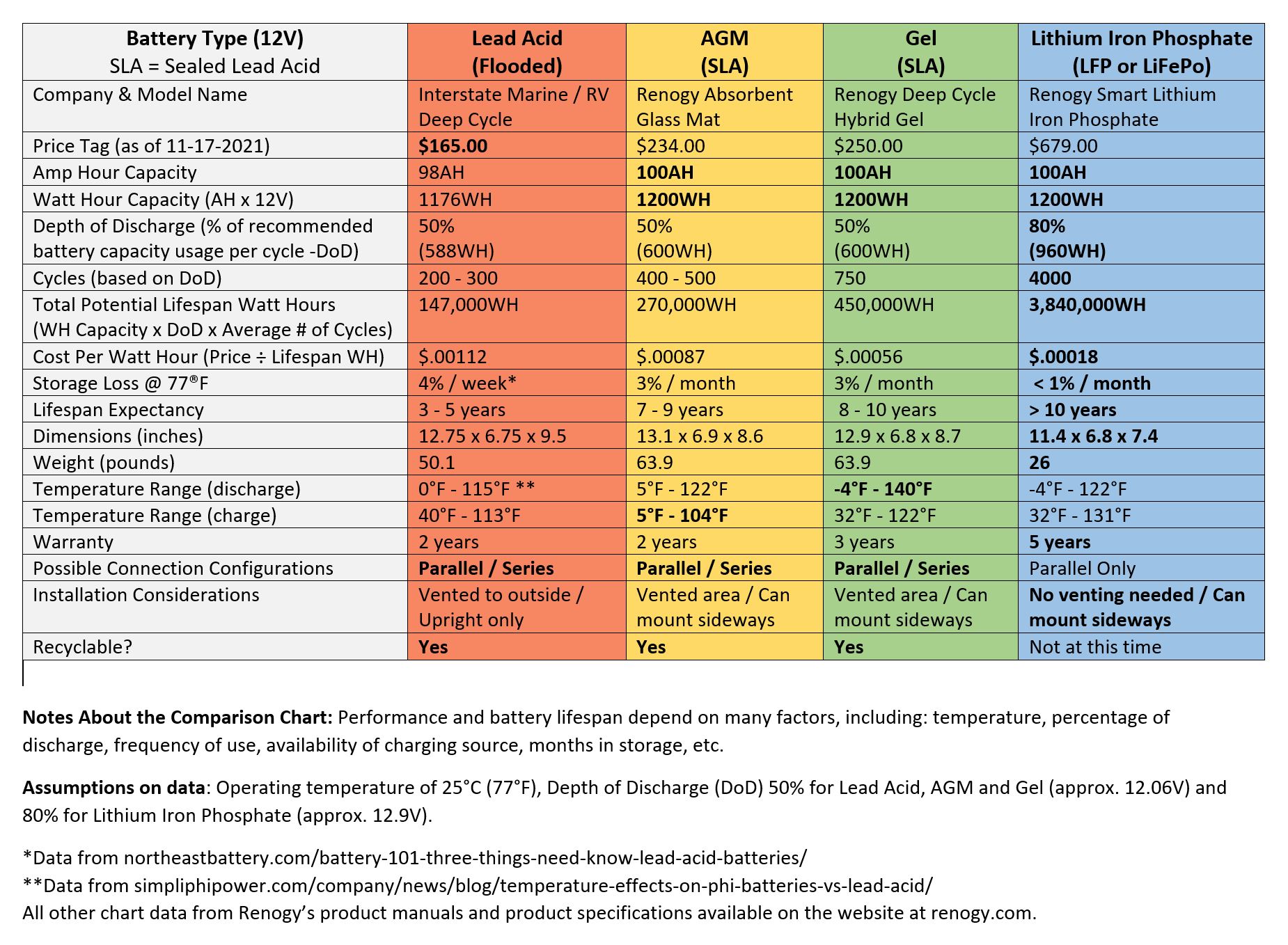
Battery Type
Renogy manufactures 3 of the different types of batteries in discussion here, except the flooded lead acid battery. For sake of comparison, we chose a popular selling model on the market so that we could compare all 4 types of solar deep cycle batteries.
Lead Acid Battery – These flooded batteries have been the industry standard for many years, and recent improvements have made them last longer. They are the least expensive batteries on the market, but will only survive a few years of regular use. These batteries require some maintenance, should not be housed inside your living space due to off-gassing, and fluid levels should be checked regularly.
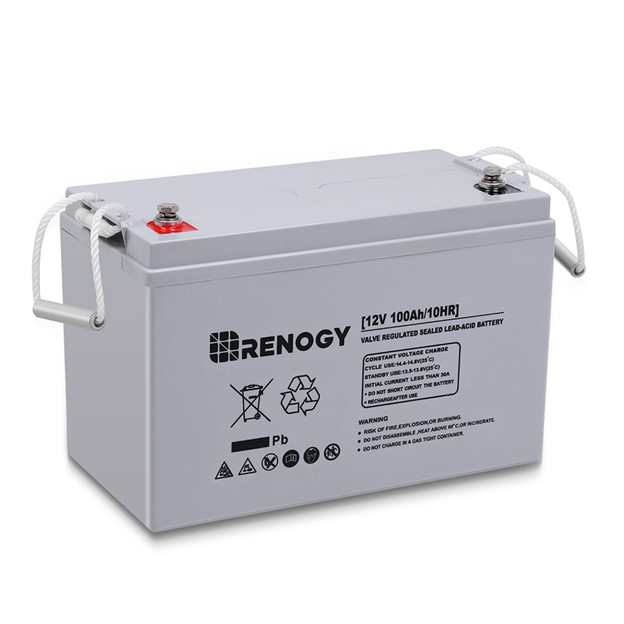
AGM Battery – Absorbent Glass Mat is a type of sealed lead acid battery which uses a fiberglass mat between the battery plates. This allows the electrolyte solution to exist in a “dry” or suspended state, rather than in a free, liquid form. AGM does not require any additional fluid, off-gasses minimally, and is maintenance free. With a wider temperature range, they can be a popular choice for folks in colder climates.
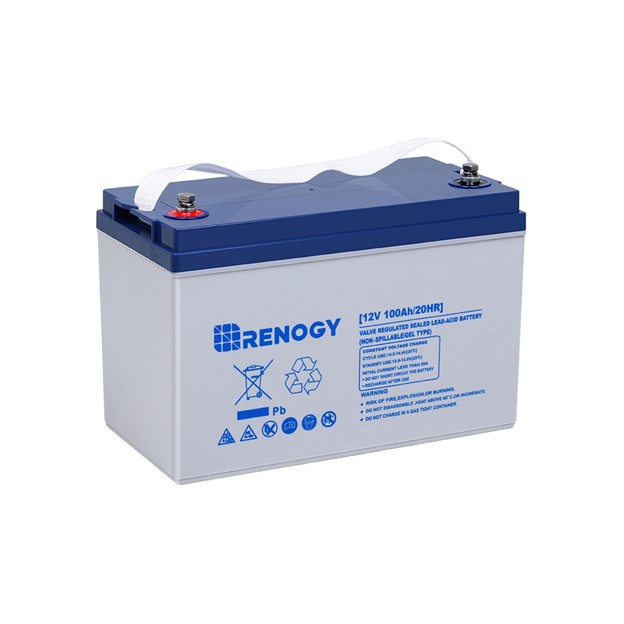
Gel Battery – Another type of sealed lead acid battery, this uses a silica compound to thicken the electrolyte solution in the battery. They offer more flexibility with installation options because they can be installed on their side. With no maintenance or off-gassing as well as a long-life span, they can be a great investment over the traditional flooded version. They do have a higher internal resistance than AGM that leads to longer charging times.
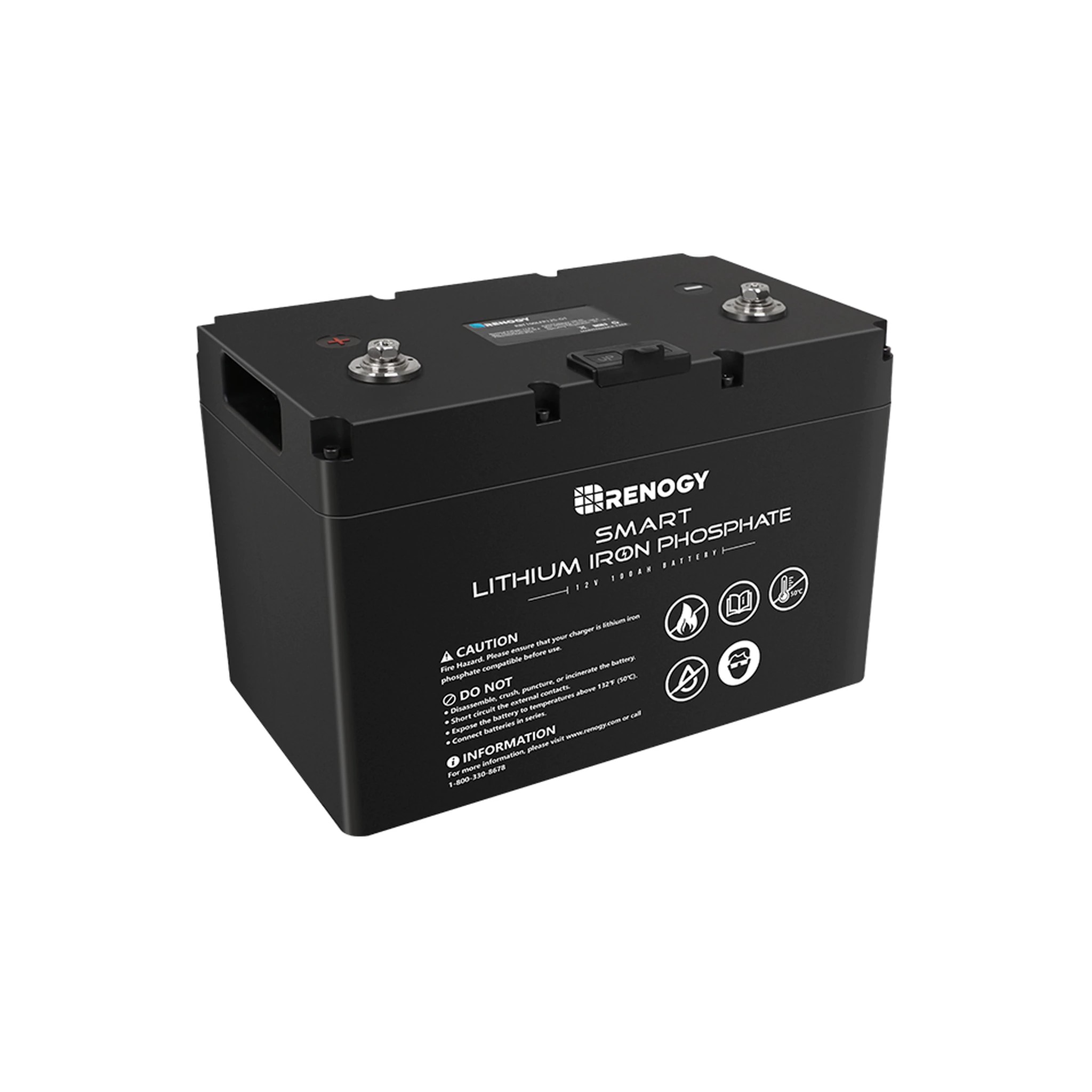
Lithium Iron Phosphate (LFP or LiFePo) Battery – This is newer technology for deep cycle batteries, and differs from the Lithium Ion batteries that are common to hand-held electronics. The LFP chemistry is much more stable, not prone to overheating, and maintenance free. Because they do not off-gas, the options for installation can include the living space of your RV, van, or boat. With a long cycle life and higher charge and discharge rates, these batteries represent an upfront investment that pays off within just a few years. For example, the 12V lithium battery ensures a lifespan of more than 2000 cycles, 100A continuous discharge current, and a wide operating temperature range.
Price Tag
When looking at a side-by-side comparison of price tags, it’s pretty easy to see which battery will make the smallest dent in your pocketbook. But, keep in mind, this is just upfront cost and not the whole financial picture. In addition to the price tag, it’s important to look at amp hour capacity, watt hour capacity, depth of discharge, number of cycles, typical lifespan, and ultimately cost per watt hour in order to get the full picture of cost over the lifespan of the battery. You may also want to examine some lifestyle considerations such as charging time, maintenance, weight, and more. So, let’s take a deeper look (pun intended!) at these important aspects of each type of battery.
Capacity
Deep cycle batteries are rated in amp hours (AH). While this number is important, where the rubber hits the road is the amount of energy / work the battery can actually deliver in each cycle. This number is expressed in watt hours (WH), which is equivalent to amp hours x volts (e.g. 100AH x 12V = 1200WH). Most people don’t realize that you can only use 50% of a lead acid battery’s total capacity; in other words, if the battery has a capacity of 1200WH, you can only use up to 600WH per cycle without damaging the battery. With LFP, the battery can be discharged by 80%, and occasionally up to 100%, without significantly shortening the lifespan of the battery; thus, if the battery capacity is 1200WH, you can routinely use 960WH and sometimes use all 1200WH. LFP batteries are nearly a 2-for-1 deal when you consider the energy they can store.
Cycles
Cycles are the number of times a battery can go through a discharge and recharge state; in other words, it’s the lifespan -- like dog years for a battery! By following the recommended degree of discharge (DoD), your battery will actually live longer and experience more cycles. As we just discussed above, the recommended DoD for any lead acid battery is 50%, for LFP is 80%. With 4000 available cycles over its lifespan, the LFP battery offers up to 16 times more cycles than flooded lead acid (250 cycles). This means that the potential lifespan watt hours (or total energy/work) are far greater for LFP!
Cost Per Watt Hour
As mentioned above, the upfront cost of the batteries is pretty clear – LFP can be 4-5 times as much as flooded lead acid. However, AGM, gel, and LFP batteries offer many more cycles, making the cost per watt hour decrease significantly. During the lifespan of a typical gel or LFP battery, you might go through 3 or more lead acid batteries, which reduces the cost benefit, especially if you have more than one in your battery bank.
To reach our calculations for cost per watt hour, we multiplied each battery’s WH capacity by its DoD%. Then, multiplied that product by the average number of cycles. For instance, for AGM: 1200WH x .50 DoD x 450 cycles = 270,000 Potential Lifespan Watt Hours. Then, divide the upfront price tag of the battery ($234) by the Potential Lifespan Watt Hours (270,000). $234 ÷ 270,000 = $.00086 per watt hour.
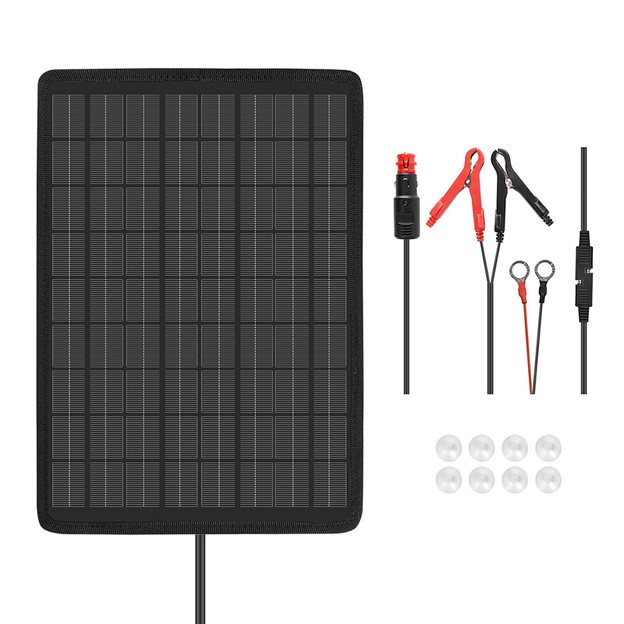
Storage Loss
If you store your batteries for a long period of time without using them, they will lose their stored energy to a greater or lesser degree depending on their type. Temperature plays a role in this percentage of loss. For example, AGM and gel batteries will lose about 3% per month, while the chemistry of LFP is more stable and will only lose <1% per month. To prevent this energy loss, many people use a solar battery trickle charger maintainer on lead acid, AGM, and gel batteries during extended periods of storage, like over the winter.
Size & Weight
Another consideration on saving money is size and weight. Since LFP has nearly double the WH capacity of lead acid, you can install a smaller battery for roughly the same energy storage at a fraction of the weight. We swapped out our old lead acid 85AH battery for a Renogy 50AH LFP battery and have gained more capacity (187WH) at half the size and a third of the weight, see our installation video. Weight contributes to the overall fuel economy of your vehicle, which is something to keep in mind when thinking about the investment.
Temperature Range
It took us a while to get our heads around this concept, as the terminology can be confusing. The temperature range for charging and discharging are different for each type of battery. Discharging a battery means that you are using it to run and/or charge up your household appliances. Charging a battery means that energy is coming in from your solar panel or other power source. For instance, let’s say it’s wintertime in Montana and you go to bed with plenty of charge in your battery. As long as the battery itself remains above -4° F, it will continue to discharge and run your appliances throughout the night. It will only stop discharging if the battery’s internal temperature drops below -4° F. Then when the sun comes out the next day and hits your panel, as long as the battery itself remains above 32° F, the battery will receive energy from your solar panel and charge normally. If the battery’s internal temperature drops below 32° F, it will not allow the solar panel or other power source to charge the battery. The same is true on the upper end of the temperature range, but it is very unlikely that a battery will get warmer than 122° F. Since LFP batteries can occupy the same space that you do, these temperature ranges shouldn’t cause a problem. But, if you must store your batteries outside your RV or cabin, temperature could become an issue.
Connection Configuration
If you are using more than one battery to power your life, you may want to set them up in series (to increase voltage) or parallel (to increase amperage). With all types of lead acid batteries (flooded, AGM, and gel), you can configure them in either series or parallel, but with LFP, you are limited to parallel only. However, Renogy is developing a device which will allow for a series connection of their 100AH LFP batteries.
Installation Considerations
All flooded lead acid batteries need to be mounted upright because of the potential for spilling the liquid solution inside. They also must be vented to the outside, most in fact are stored in a special compartment or box on the tongue of the trailer, because of the off-gassing which occurs during charging. AGM and gel batteries have minimal off-gassing, and just need to be in a vented area (no sealed boxes). These can also be installed in a variety of orientations which increases installation options. LFP batteries do not need to be vented, and offer the same flexibility as AGM and gel.
Charging Time Considerations
While not included in this chart, the charging times vary greatly due to each battery’s chemistry, internal resistance, input voltage and amperage, as well as battery temperature. Due to these variables, it’s difficult to put this information into a concise chart. However, in general, LFP batteries charge much faster as a result of their lower internal resistance. Among the 3 lead acid options, gel is typically the slowest. Anecdotally, we’ve noticed a significant decrease in charging time between our old lead acid battery and new LFP battery.
If you need further explanation or help with troubleshooting your solar installation, give us a shout! We are educators by trade and love to help people get started with solar. If we don’t know the answers, we’ll get in touch with our Renogy Engineer friends. Please contact us via our website or social media listed below.
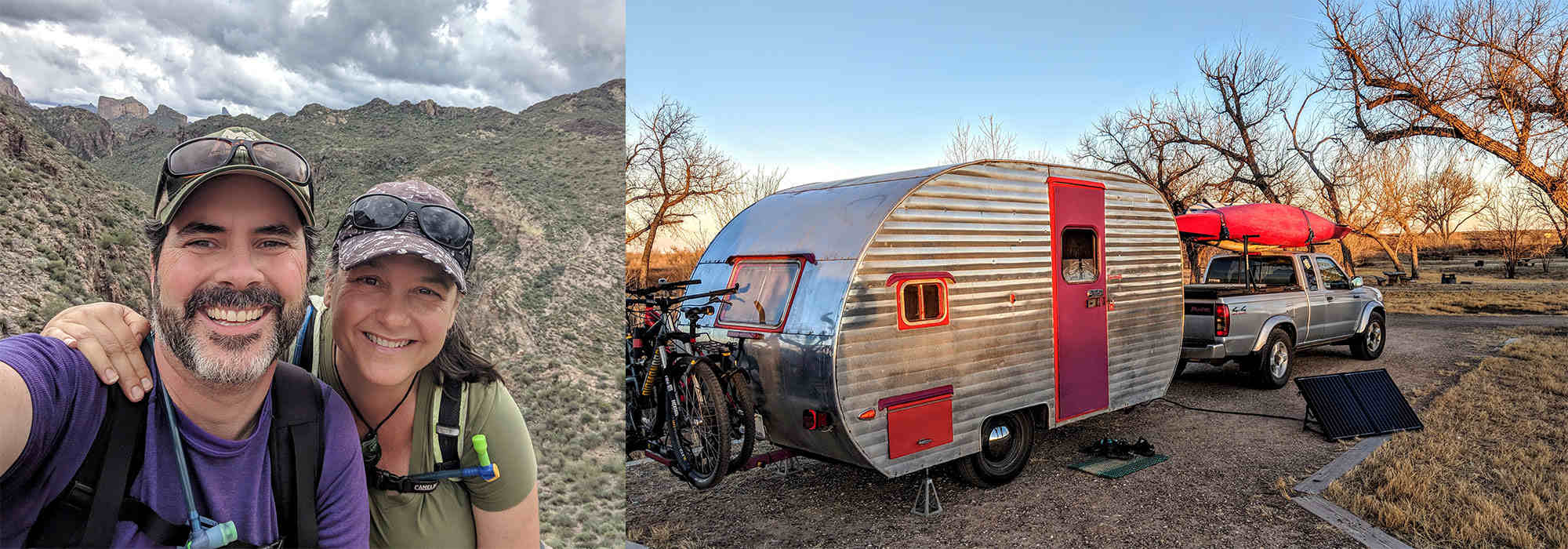
Shari Galiardi & David Hutchison have turned their higher education backgrounds, desire for life-long learning, and thirst for adventure travel into writing, photography, video production, and public speaking tours from coast to coast. Known to their friends as simply Shari & Hutch, you can learn more about their full-time, solar powered adventures on their website at freedominacan.com. Or, follow them on Facebook, Instagram, and YouTube as “Freedom in a Can.”

